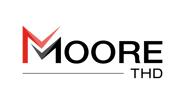As we developed our content series on the RFP process, we've had some thoughtful exchanges on the topic both internally and with clients. We recently asked our team: What is one question you’d add or one change you would make to the RFPs we typically receive that you think would result in a better response? We are sharing four ideas here as thought-starters for your process:
One of the encouraging things in recent RFP cycles is that, while 8 out of 10 RFPs in the past would’ve included a long list of questions that were operational in nature, more organizations are posing inspirational thought-provokers. These organizations aren't just interested in ticking off boxes about how we deliver work or our granular work processes; they are signaling a willingness to break with the past and move into an exciting future.
The questions I find most inspiring are the ones that ask us to articulate how THD's vision and strategy would help a nonprofit grow and evolve. Questions like these get us excited about delivering big ideas that have a meaningful, consequential impact on the requesting organization.
Some questions that come to mind include: What was the most meaningful achievement you made on behalf of a client this year? What breakthrough idea is the pride of your agency? These are great because they require evidence of strategy, execution, and results — and they also illustrate what we value in partnership outcomes.
One question I like to ask partners or new hires we are considering is: "A year from now, we are sitting around a table reveling in success — what are we celebrating?"
Vision alignment is so powerful. I welcome more visioning, future-focused RFPs that force us to step out of our response comfort zone. These get us thinking outside the box while also building our enthusiasm for future meaningful work that will create social impact in a new way.

I had to give this some thought because we see so many RFPs, but I finally came to a conclusion. If you've done your due diligence and researched the agencies you're inviting to respond, you already have a pretty good idea of what services and tools they bring. There are a particular set of requirements that are table stakes. Instead of spending time on those and asking for more details, I would recommend that organizations add questions to the RFP to illustrate what the relationship will be like.
Nonprofit client/agency partnerships are like marriages, for lack of a better term. We are probably going to work together for several years. And, like in any good marriage, we need to be compatible. There will be periods of smooth sailing, but there will also be inevitable bumps in the road. So, how do we communicate? What level of transparency can be expected when problems arise? How will we celebrate successes together? How will we problem solve? What does collaboration look like? What are our expectations of each other? Are we proactive or reactive? Ask for examples of these ideas in action. If we aren't coming from a shared expectation about communication and collaboration, it won't make a difference if all the services, techniques, and tools are there.

Often, we will receive an RFP with a scope-of-work statement, and some of the questions asked will absolutely align with that scope of work. But then other questions start to creep outside of what we would consider the defined scope. However, because the questions are in the RFP, we assume that we should include those considerations in our proposal. This sometimes results in our missing the target because we put too much weight on those assumptions. Or we got distracted by questions that aren’t as significant as others in the RFP for evaluation purposes by the organization. And the more significant questions didn't get amplified in our response.
I think these missteps could be avoided or resolved by having more face-to-face time during the response development portion of the RFP process. While there is often a Q&A period built in, it frequently occurs before we get deep into proposal development (when additional questions on our end arise), or there is minimal time allotted for more interaction between organization and agency. We can't sufficiently delve into areas we want to clarify. Additionally, we are often working against a clock to prepare the response, and there isn’t time for back-and-forth messaging.
While more face-to-face time would be amazing for the agency responding, it wouldn't just be for our benefit. It's also valuable for the requesters because it improves the end product they receive, which gets to the elements that matter most to them. What a profound difference it would make to talk to the team we'd work with and get a better understanding of what deeply matters to them!
This interaction would allow us to explore why the organization is asking specific questions (allowing us to assess the accuracy of the project scope definition) and which responses will carry more weight than others. Critical nuances sometimes get lost when 100 questions appear to be equally weighted. Why have an agency spend time on ideas that matter less to the success of your mission? Point us to the ones that mean the most to you! We want to be helpful from your first experience with us — which is sometimes the RFP.
And finally, more personal interactions also give both parties a sense of the personalities involved. That isn't always something that comes through on paper. So skip the perfunctory, structured Q&A process that requires spending a lot of time documenting answers to questions that may be irrelevant and opt for a less formal “what matters most” process.

I would love to see questions that probe on values alignment between partner and client. After the expected marketing boxes are checked, do you align on a broader goal or a deeper value — will there be a common devotion to something bigger?
I think a particular area that lends itself to interesting questions (that get at the alignment of values) is the use of powerful digital capabilities. Digital adoption has accelerated so rapidly that the digital world is not well regulated, and it's constantly changing. So, while some actions and techniques are currently entirely legal, each organization has its own ethical boundaries. If I were in an organization evaluating a partner like us, I would want to know the provider's immovable boundaries. Further, what ethical digital limitations do they recommend for us as a nonprofit and why? I think the answers to those questions reveal the character and values of an agency partner.
This thought came to me as I reflected on working in both the nonprofit and the political space. The organizations I've come to respect most are the ones that aren't willing to do just about anything (even though it's technically legal) to get to their goal. Because they have certain moral ideals and standards about doing the right thing. To me, that signals that they genuinely care about improving the world and are transparent about their intention and means to do it. In my experience working in the digital space, having these boundary conversations early on leads to good relationships and good results. It's so important in the context of fast-moving digital capabilities. It would be a great addition to an RFP because the answers illuminate a lot about both the organization asking and the one answering the question.
What about you?
What questions or process changes might inspire a better RFP and better responses that spotlight the best match between agency and partner? Contact us here! We'd love to hear from you and compare our partnership philosophies.





